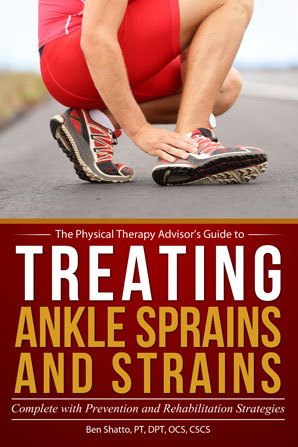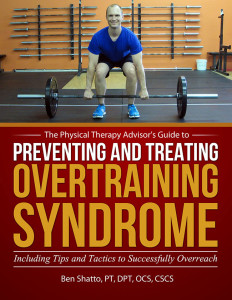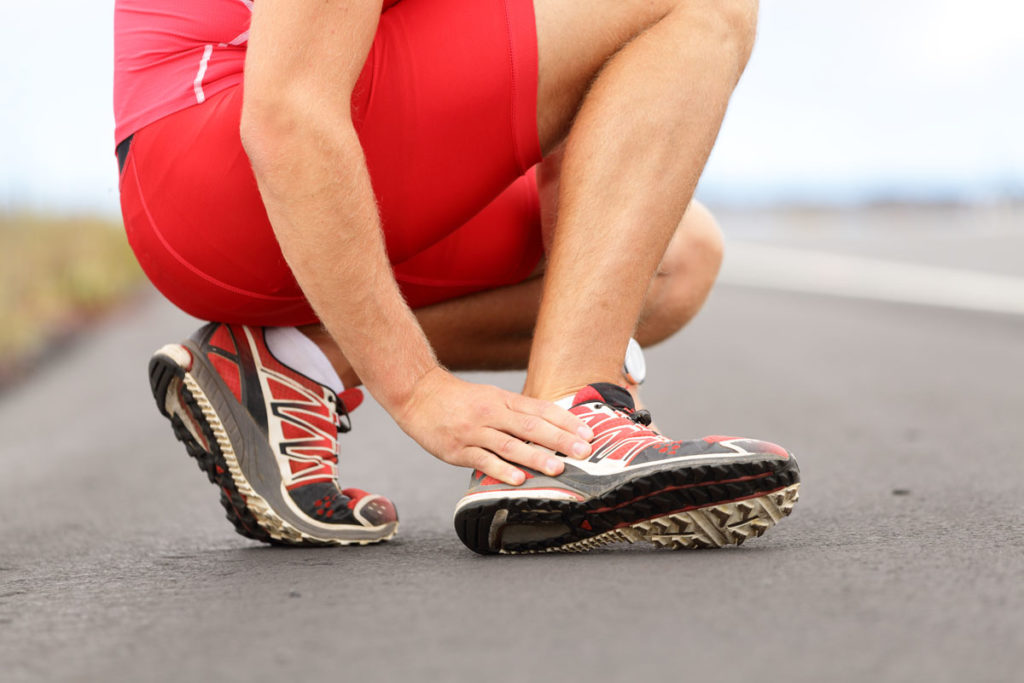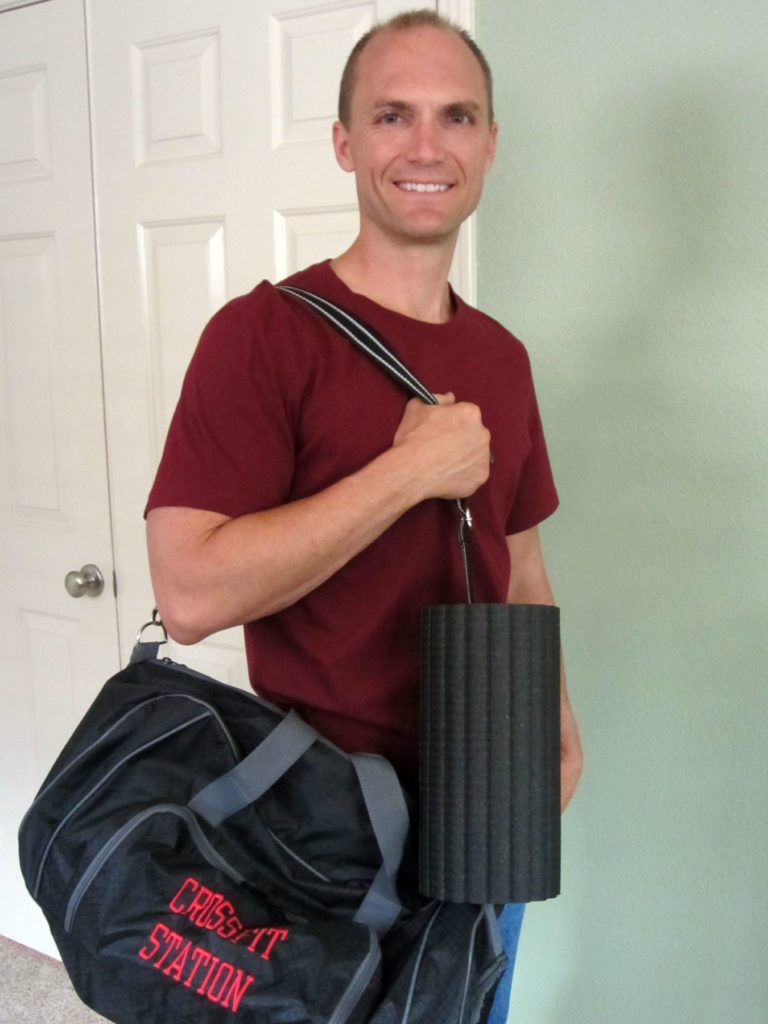Whether you are an athlete or weekend warrior, we all want to perform our best. Many of us live for the weekends so we can participate in the next run, Spartan race, CrossFit Team WOD, or any number of other adventures. However, no one is immune to one of the one of the most prevalent medical conditions treated in the United States and throughout the western world–low back pain (LBP).

If you want to train hard and compete at a high level or even just enjoy the weekend’s events, then avoiding LBP is critical. Avoiding the following three most common mistakes can save you from costly medical visits, prescriptions, chiropractic visits, and physical therapy services. More importantly, avoiding injury and LBP insures that you can keep training and racing to your heart’s content!
The 3 Most Common Mistakes:
Sitting too much.
Prolonged sitting (and especially, prolonged sitting on a vibrating surface) is one of the biggest risk factors for LBP. Sitting (slouched in particular) causes excessive strain on the lumbar discs and ligaments. It also leads to tight hamstrings and hip flexors and generally tends to inhibit proper gluteal muscle function.

Even if you are running, exercising, and training during most days of the week, we all spend too much time sitting whether it’s at our job or traveling each weekend for destination races and events. Even worse is sitting with chronically poor posture.
- Limit the amount of sitting that you spend at one time. Ideally, move from your sitting position every hour to walk preferably. If you aren’t able to walk, then try to shift your position at least once every twenty minutes. Frequent position changes can help you to avoid LBP. Avoid a long car trip directly before or after a long run, race or event. For destination events, it’s best to arrive at least a day or two early and wait a day prior to returning home.
- Sit with correct posture. Whenever possible, make sure that your knees stay below your hip level and that you are able to maintain your natural lumbar curve. A McKenzie Lumbar Roll is a great tool to help you maintain correct posture.
Not training the core properly or adequately. Don’t forget the back extensors!
Proper core and lumbar extensor strength is the key to preventing an episode of LBP, which is estimated to affect nearly 80% of the U.S. population at one time or another. In general, most of us don’t spend enough time strengthening our core muscles (particularly, the back extensors).
The core muscles are part of the body’s natural method of stabilizing the spine. The core muscles, along with intra-abdominal pressure, help to form the round cylinder that is utilized to support the spine. Ligaments and boney articulations are also important in spinal stabilization. Most people don’t realize that the core actually consists of two separate groups of muscles, the inner and outer core muscles, and neither group involve the rectus femoris muscles (the six pack).

The Multifidus Muscles
- The inner core consists of the muscles of the pelvic floor, the transversus abdominis (TVA), diaphragm, and the multifidus muscles (which span the vertebrae along the back side of the spine as shown above). The TVA wraps all the way around the stomach and attaches to the spine. This is what helps to form the cylinder. When contracted (in conjunction with the pelvic floor and diaphragm), it helps to increase the intra-abdominal pressure to support the spine.
- The other muscles that help to support the spine are known as the outer core muscles. These muscles are responsible for movement of the trunk and spine as well as aiding in stability. The inner core muscles do not actually produce any trunk or spine movement. The outer core muscles consists of the following muscles: lumbar paraspinal muscles; the quadratus lumborm; the internal and external obliques; and the psoas major and minor (hip flexors). Some may also include the glutes (buttocks muscles), hamstrings, and quadriceps as part of the outer core muscles.
Those that work on core strength may not be performing the correct exercises. Performing proper core exercises and particularly, lumbar stabilization exercises are the primary treatment modality for LBP. To learn how to effectively exercise and work the core muscles in order to prevent or treat LBP, CLICK HERE.
Not performing a proper warm up.
An adequate warm up should always be performed to help minimize the risk of injury and maximize your ability to perform at an optimal level. A proper warm up should include: a cardiovascular warm up; a dynamic warm up; a specific spine warm up; and when indicated, a sport specific warm up.
Cardiovascular Warm Up
To properly prepare the body for activity, the first stage of the warm up is to increase blood flow throughout the body, but in particular, to the core muscles and spine. I recommend approximately 10 minutes as this allows for better mobility in the joints and tissues of the body. It starts to prime the nervous system for activity. It also promotes healing as movement is necessary to bring in the nutrients necessary to heal (if there is already damage or an injury).
The cardiovascular warm up will vary and is dependent on your activity or sport. I will typically start by performing a light jog or possibility some jumping jacks. Then I may progress into some more intense heart rate increasing exercises, such as jump roping or any other form of standing movement (jumping, bounding, and burpees), in order to increase my heart rate. The goal is to increase your heart rate and promote blood flow throughout the body. The warm up shouldn’t be overly intense.
Dynamic Warm Up
After my initial cardiovascular warm up, I progress into my dynamic warm up series. This will typically involve warming up the muscles and joints of the spine, pelvis, and lower legs.
The purpose of the dynamic warm up (specifically in the lower extremity) is to insure adequate mobility in the areas that will be involved in the activity. This will almost always include the hamstrings, hips, and pelvis. Adequate lower leg mobility is important in order to perform your specific exercise or activity. The more motion that can occur through the pelvis and legs, the more force can then be generated and passed through the pelvis. More mobility in the lower legs and pelvis means less need for mobility in the spine. This means less stress during motion will be placed on the spine—therefore, decreasing your risk of injury. You want to maximize spinal stability and encourage movement through the hips, pelvis, and upper thoracic.
Within the dynamic warm up, you would perform exercises such as: forward and backward leg swings; side to side leg swings; squats with rotation; and press-ups. Utilizing a foam roller as part of a warm up is acceptable. However, I don’t advocate static stretching before activity as it has been shown to decrease force production and performance.

Spine Specific Warm Up
I am a big proponent to performing a very specific spinal muscle warm up upon completion of the cardiovascular and dynamic warm ups. Since you may have already experienced an episode of LBP, a very specific and thorough warm up is important for prevention. Priming the specific muscles of the core (particularly, the multifidus and lumbar extensors) is a critical step to avoiding re-injury. The multifidus is a critical muscle in preventing LBP and must be active to properly stabilize the spine. It helps to prevent shearing forces from affecting the spine which is critical to avoiding LBP.
Sport Specific Warm Up
This warm up will vary significantly depending on the type of endeavor you are about to participate in. For example, a sprinter will need a very different warm up compared to an ultramarathon runner or someone performing in a CrossFit competition. For runners, the warm up varies. Are you racing on a flat course or are you heading out for a very hilly trail run?
Examples of running specific exercises include: butt kickers; strides or bounding; and warm up sprints. Even running a little on the actual terrain you will be competing on is a good idea.
It’s important to evaluate the requirements for the event and be ready to perform the actual movements required to compete at a high level. A proper warm up allows your body to immediately perform at its peak and reduces the risk of injury. Regardless of the sport or event, this is also the perfect time to make sure all of your equipment is appropriate for the conditions of the event.
Don’t skip the warm up regardless of your training or event time and/or location! You may be the only one performing a thorough warm up, but it’s because you understand the importance of one in order to prevent LBP and to improve your performance.

An inadequate cool down is another common mistake. Be sure to take the extra time to cool down and stretch. Start with a slow jog, and then progress to walking until your heart rate returns to normal. This is an excellent time to utilize the foam roller as well as performing static stretches and press-ups.
It’s important to identify the common mistakes that can cause LBP. By implementing these prevention strategies, you can avoid injury and keep training. Fitness is a lifelong pursuit. If you are injured or just not having fun, then you will not stay engaged and motivated in the long term. Don’t let LBP affect your ability to stay active and keep enjoying your favorite activities!
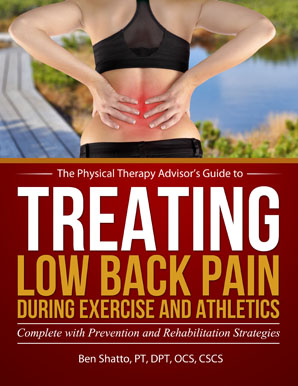
AVAILABLE NOW ON AMAZON!
In my book, Treating Low Back Pain during Exercise and Athletics, you will learn how to address specific causes of LBP as well as the best practices on how to prevent and self-treat when you experience an episode of LBP. In this step-by-step LBP rehabilitation guide (complete with photos and detailed exercise descriptions), you will discover how to implement prevention and rehabilitation strategies to eliminate pain and get back to training and exercise sooner.
Learn how to prevent, self-treat, and manage LBP so you can get back to your daily life and exercise goals more quickly without additional unnecessary and costly medical bills!
BUY NOW

